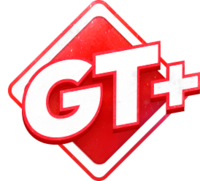Doug Polk: With just two tables remaining in the World Series of Poker, Kristen Foxen was a crowd favorite to take the whole thing down. Many people showed their support online, and she was building a stack going into what would become the final table. With just 13 players remaining, she decided to take a stand with one of the biggest bluffs in Main Event final table history.
Unfortunately for her, it didn't work. Was this aggressive gamble a great move or a terrible punt? The internet has already decided, but here we're going to take a closer look and break down exactly what I think about this hand from Kristen Foxen.
This is going to be a controversial hand today, and some people already have their minds made up, but you might be surprised by my take on it.
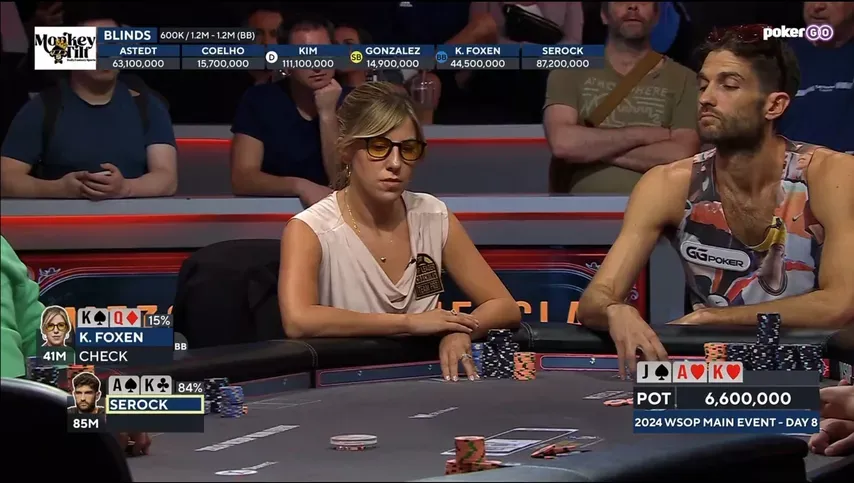
Let's start off by looking at what exactly went down in this pivotal hand with just 13 players left at the World Series of Poker Main Event.
Joe Serock opens under the gun to 2.4 million, and then Kirsten Foxen end up calling the big blind with King-Queen. So, a little flatting the big blind from Kristen.
with 6.6 million already out there. She checks, Joe bets 4 million on the flop, and then Kristen makes the check-call here. Going into the turn, we've got about 14.5 million in the middle.
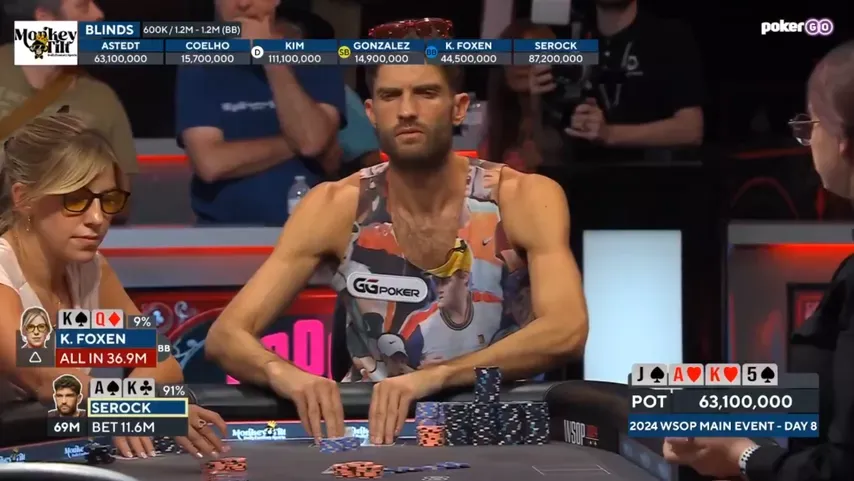
The turn's the Five of Spades. Foxen checks once again, and now Joe decides to bet 11.6 million, sizing up here on the turn, leaving about 25 million behind.
This is where Kristen makes her move. She goes all in.
Joe called almost immediately. The river changed nothing, and Kristen was eliminated in 13th place ($600,000), losing one of the biggest pots at this stage of the tournament. A very big hand. If Kristen won it, she would be even with the chip leader and have a good chance to build on her success.
The WSOP website lists the stacks of all players shortly before Kristen's elimination.
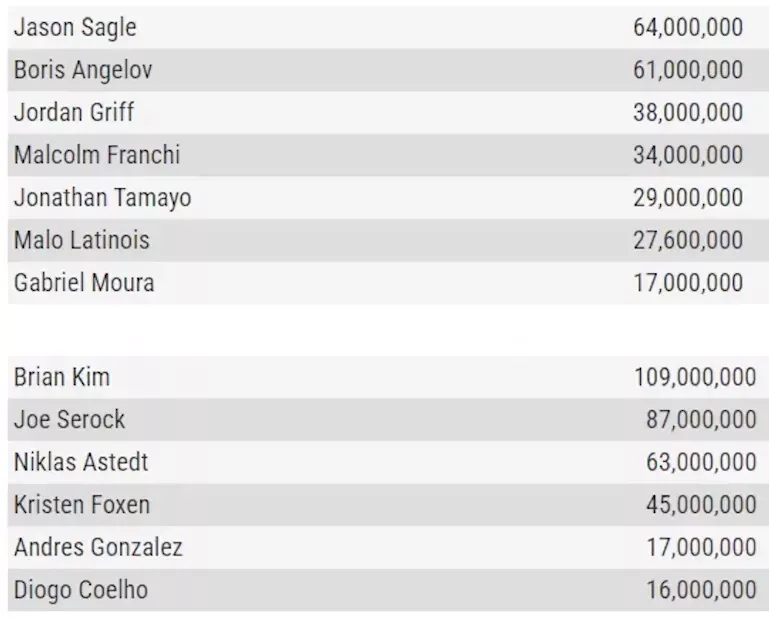
Preflop: I think pre-flop is standard. I don't really see a good argument for 3-betting. I'm definitely not going to fold the big blind, getting a great price, so I think calling is definitely the standard play. I wouldn't be surprised if once in a blue moon you squeeze this, but calling is definitely superior, and that's correct. So certainly no issues there.
Flop: On the flop, Ace-King-Jack, two hearts. This is a board that is very good for the pre-flop raiser because you can have Ace-King, Ace-Jack, King-Jack, all the sets, Queen-10 suited, tons of value for the opener. The big blind can have Queen-10, can have all the Queen-10, and the big blind probably will have a good chunk of Ace-Jack, but the big blind's not going to have any of the sets that often, maybe occasionally Jacks, and the big blind's not going to have the strong two pairs that often either, maybe some Ace-Jack. So certainly a range advantage for the player opening under the gun.
One more thing I would note in this spot is this guy's got a lot of chips, so he's going to certainly be a lot looser than normal, but the way that the table looks here, he can't go too crazy because Brian Kim has him covered behind, and then Nicholas AET has a lot of chips as well. So, I think he'll probably be looser than normal with this stack, but I don't think he's going just crazy to town like we've seen with some chip leaders in the bubble. He's got to get through every player, and there were some big stacks behind him, so I don't think his range is all that crazy.
The turn is where things get interesting.

Before we even get into the action, this is now a double flush draw board. Typically speaking, there are a little more large raises on double flush draw boards to try and deny the equity of hands that are barreling with flush draws. Because when there are two flush draws, there are way more draws that your opponent can have that are looking to bet and bluff, because they can have either flush draw. So typically in two flush draw situations, you're going to be using more raising as the player facing bets.
That said, I still think I would play most of my range as check-call here. Maybe you could do a little bit of check-raising all-in with some of your best two pairs, some , and working some bluffs, some like of or seems kind of natural. Maybe of or seems kind of natural. But I would be looking to mainly still check-call this turn and maybe put in a few check-raises.
One more note: you'd want your check-raise bluffs to not have cards that your opponent would be bluffing with. So intuitively, something like or makes more sense as a bluff than like , because the will block more of the barreling draws.
Point of the matter is, I don't mind some check-raise all-in here on the turn. I just don't see where falls in it. Now that said, there are a few things I like about this. Now, I would prefer not to do this, I'd prefer just to call, but there are a few things I like about this hand here. When you have the offsuit Queen, you do block more of the value that's going to call you, specifically, and you also don't block as many of the flush draws. If your opponent was opening with suited, suited, that kind of stuff, maybe your opponent is betting twice with a pair and a gutter, or a pair and a flush draw, and doesn't want to call a jam. Not quite that likely, but possible.
The reason why I think my take might be surprising here – I think this is not good, but I think it's pretty close. I think that there's some logic here for why she's picking this hand. It does block a good portion of value and it does unblock a good portion of bluffs. So I would say, I think this hand is slightly bad. I don't think this hand is an intergalactic turbo punt that people seem to be thinking online.
Now, I'm thinking about things purely from chip EV. If you want to go down the ICM rabbit hole, I would encourage you don't, because I think that it's a trap that people get into. I think mindset-wise, you should just be playing to win the tournament, and she is – she's playing to win the tournament, which should be the point.
Guys, look at you over there. You think you know what to do in the Main Event. You know she punted, what a loser. But have you thought about, what if he was bluffing? What if he bet fold ? What if he had a flush draw that would have got there and got denied? What if he just had nothing? This could have worked. And if it did work and she built a stack, people would look back on that pivotal hand and think, "Wow, that's what it takes."
So next time we're going to Monday morning quarterback on a big decision someone made to try and win the tournament, you're going to do the exact same thing.
Yeah, I don't know why I said that. I'm wasting my time. Anyway, all right, so that's my thoughts.
Doug then proceeds to analyze the hand using a solver but does not factor in ICM, preflop or postflop. This revolutionary approach outraged even the most devoted viewers. The viewer @justmusic2353 had a fairly detailed critique:
Doug, 7 years ago I signed up for Upswing and it helped me a lot so I have much respect for you. That being said, you butchered this video my man.
You can’t analyze the biggest ICM spot in the world without ICM, I understand that ICM ranges for this spot is not available even on Wizard which only supports 1000 entry tournaments preflop, so we are far from having post flop with icm for a 10k entry field, however, we can make educated guesses base on how the ranges differ from 200 field to 1000.
The fact of the matter is, the bigger the field size, the bigger the ICM impact when reaching final table bubble, this is a 10,000 field entry with 13 left. Not considering ICM in this spot is something Jerry Yang or Jamie Gold would do, not a top professional.
In a 1400 entry field like the 1k event 82, the pay jump from 13th to 9th is 10k to 16k. An increase of 6 buyins. In this situation sure, play for the bracelet who cares about a couple grand.
In the main event, from 13th to 9th is a whooping 40 buyin increase. Do you see the insane ICM pressure here? Let’s put this into perspective, if you play this event and have the run of a life time and placed 18/10000, you will only make 35 buyins.
I haven’t even factored in the prestige of being the 2nd woman ever to make a final table and the only one in 3 decades since the game has become mainstream.
Obviously, there is a lot more money on the side that she can make if she final tables being the only women who has done it in nearly 3 decade, and the 2nd overall. I don’t how much but I’m guessing a lot more than some random chick considering she’s a high-stakes crusher who is also very beautiful, a very attractive candidate for all the sponsors to fight after which would only increase her sponsorship deals even more.
We also find the second part of Doug's video inadequate for the task at hand. So let's move on to the next commentators, Ben Rolle and Kami Chisholm.
Ben Rolle (Bencb)
All the people saying Kristen Foxen KQo turn shove is a punt, probably never nodelocked a sim.
She gets AQ AT to fold.
Even lots of A5 A9 type of hands bet/fold.
Yes those hands make sense to barrel turn.
You get JT KT type of hands to fold, even some splits like weak Ax and value from pair and flushdraw you are ahead against.
You cant expect KQ type of hands x/shoving turn.
So I expect lots of thin value bets on the turn to xback River.
This can easily be a money printing turn shove with all the hands that bet/fold.
Yeah sometimes you will run into top range. Thats Poker.
Thats why she is one of the best for many years.
I can imagine we get the fold 70-80% of the time and she gets a good price on shoving the Turn.
Sure you could argue that with her Edge she could wait. But if this one goes through she is in a good position to bully the entire FT.
So massive Future Game too.
I can also imagine that this spot can be extremely profitable considering the unbalanced turn betting range (also easy to barrel all the lower pocket pairs we get villain to fold)
I have a lot of respect for players like her to run these huge bluffs in such a Tournament.
WP Kristen
– Alex Weiss
Correct, very well played hand. it shows who sims every day and improve, versus who just autopilots low aggression, low winrate poker. this spot could giga print, especially given how top heavy the tourn is. massive respect to her to run a huge bluff on the biggest stage.
– @JonChoivo
I don’t think and folds here? Or not at all high frequency.
You get all the low AX to fold maybe, but you also fold out all the under pairs he is bluffing, and naked flush draws, which have pretty low equity.
I dunno, if you run a sim with a tighter opening range and remove some bluffs due to the nitty meta of main event FT.
It’s a negative EV call or jam. Solver will 0% jam here.
If you make a sim with a tight opening range and remove some bluffs due to the nitty meta of the WSOP Main Event, both the call and the push have negative expectation. Solver never pushes.
– Ben Rolle
and fold here 100%
You are against 2 pairs and str8s
You wanna call and risk most of your stack to hope your opponent bluffs. This is not big10$
The third expert is Kami Chisholm, who, although a three-time SCOOP champion, needs an introduction. On the 2+2 forum, Kami wrote under the nickname drkamikaze (more than two thousand posts). She played actively online in the late 2000s and early 2010s.
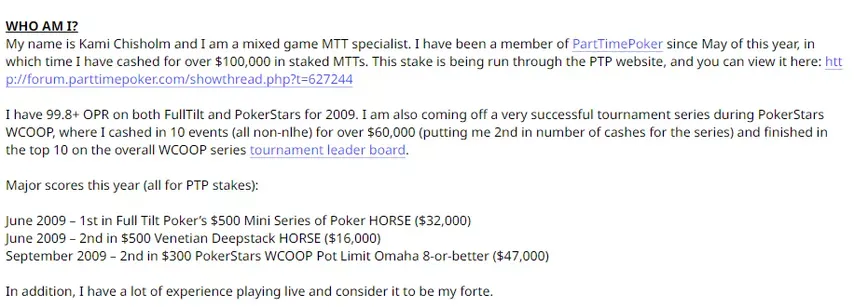
In 2012, she won her first SCOOP ($27 Badugi). Since 2013, she has left the game offline, but occasionally appeared online (I met her in limit tournaments). In 2020 and 2021, she won two more SCOOP in Omaha Hi-Lo, pot-limit and no-limit.

Since 2024, she seems to have regained her taste for offline and even won three times at the winter series in Canada. Her analysis seemed the least lazy to me.
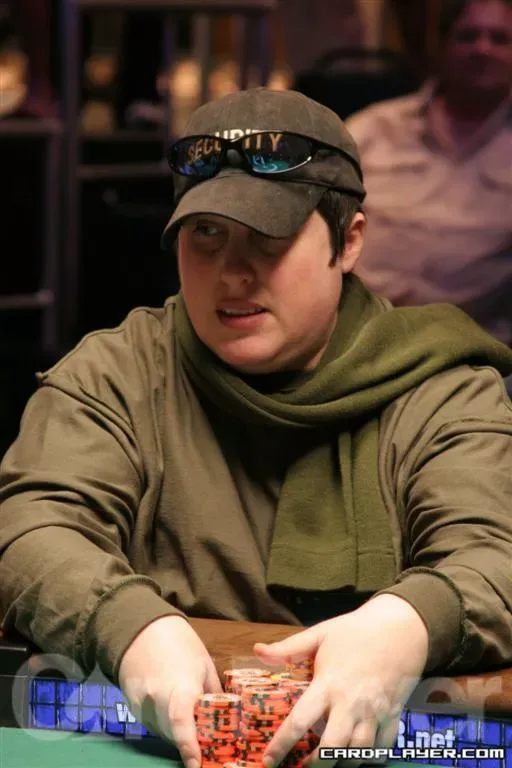
HH analysis:
13 remaining in the main, Serock opens UTG (LJ) and it folds to Foxen in the BB with K♠️Q♦️ off, who makes the standard ICM flat vs an EP open.
Flop is
Foxen checks. Solver says 100% check.
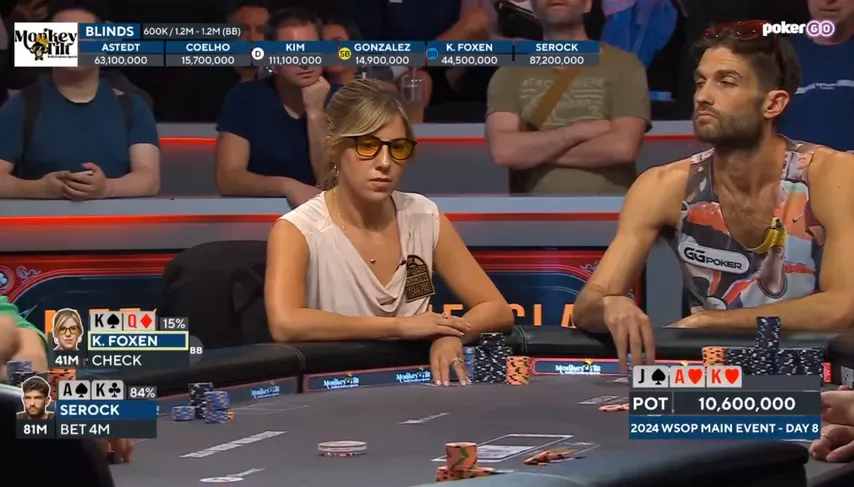
Serock bets 4m into a 6.6m pot. Understandable why he went big on a 3 broadway board, but solver likes bet range small, though it is indifferent to the larger sizing, so that's fine.
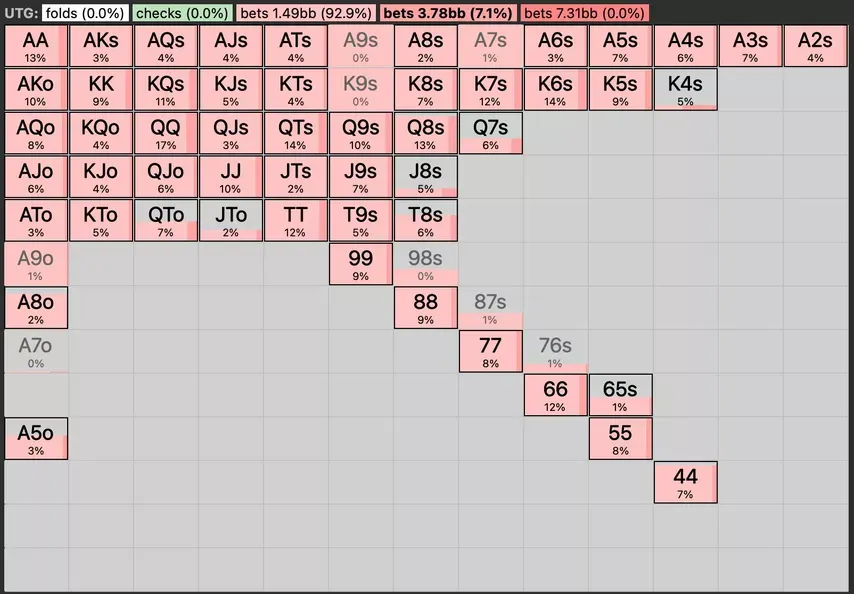
Foxen calls the 4 million, and solver agrees.
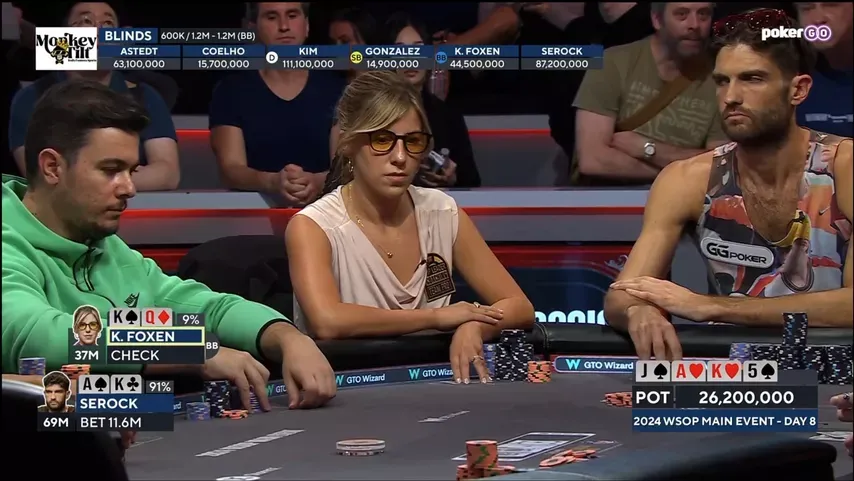
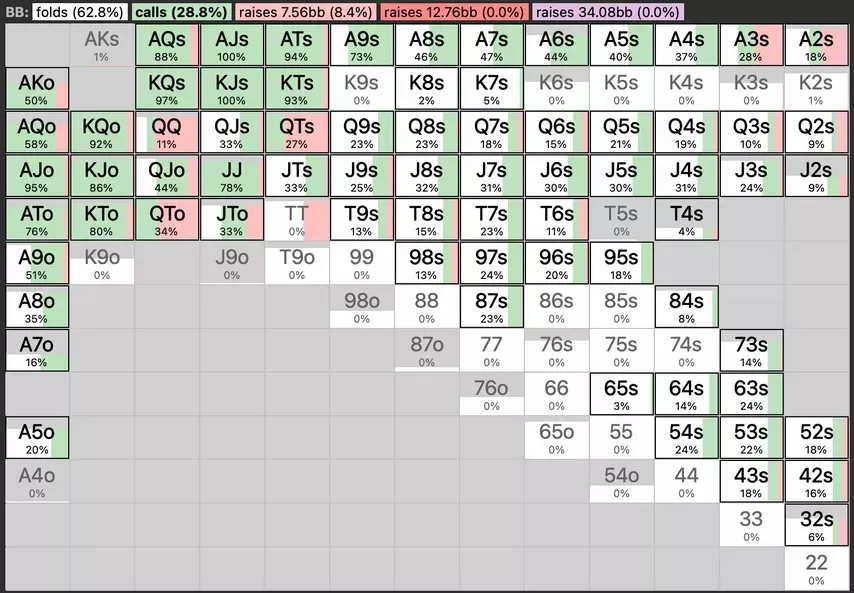
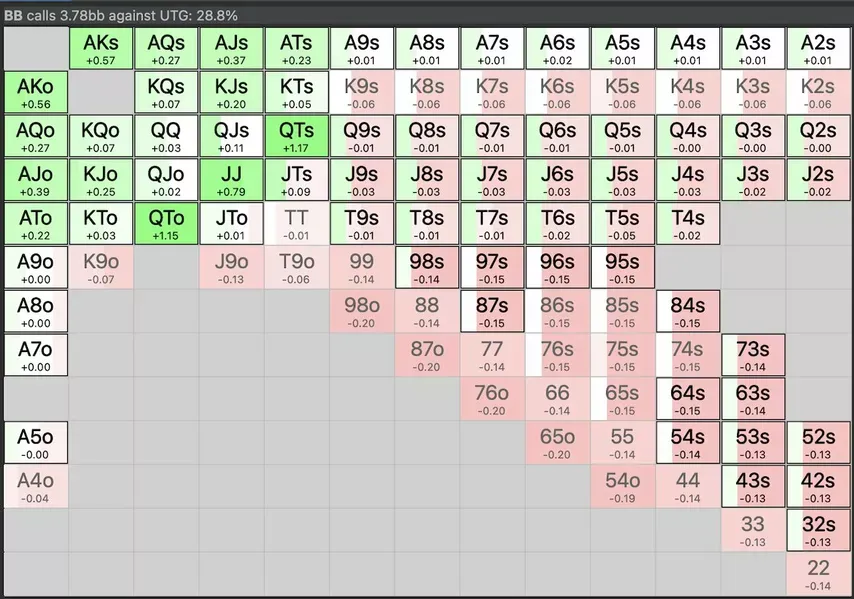
Turn .
Foxen makes the standard check.
Serock makes an 11.6m continuation bet into the approx. 14m pot. Solver chooses this larger sizing.
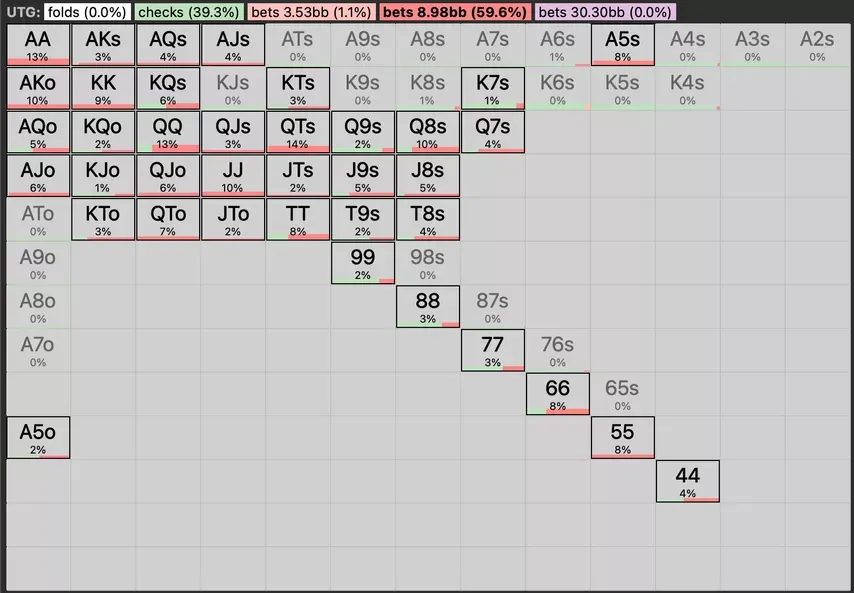
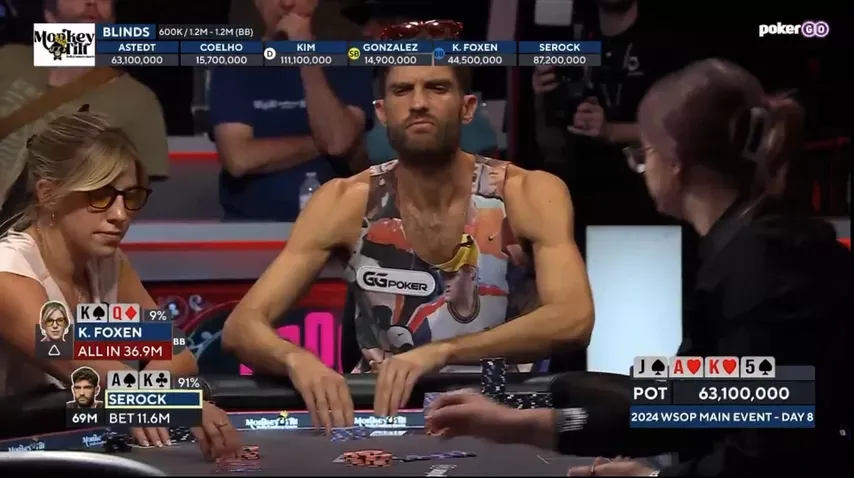
Foxen tanks for a bit, and jams with 2nd pair/Q straight blocker/gutshot.
Solver says calling is indifferent and folds this combo. Overall, KQo call here is -.01 EV.
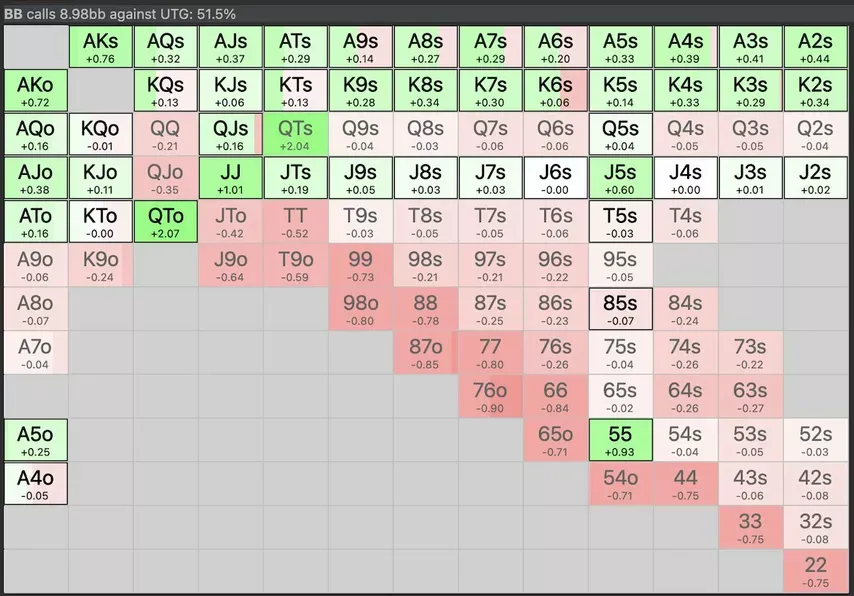
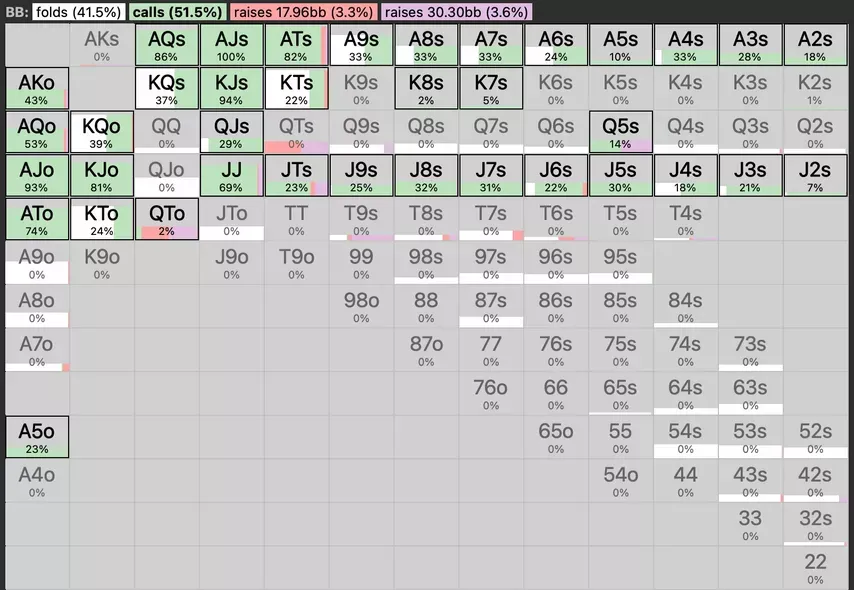
Solver say jam loses -.18 EV (bluffs are usually 0 EV).
What does solver bluff here? Some suited (hearts) Q and T combos like T9hh, etc. There are no offsuit bluffs, usually this is because we need the added EV of the flush draw.
There are no "low freq jams" with KQ.
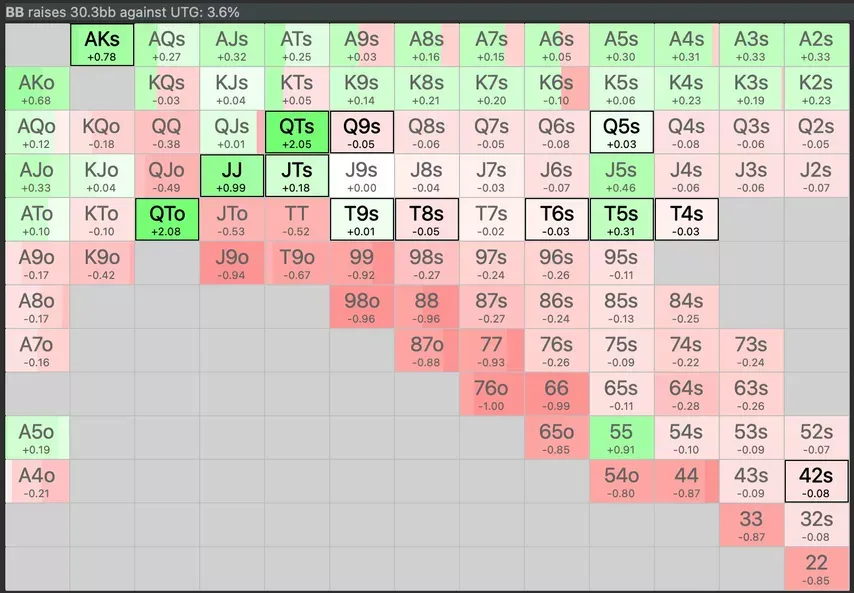
Since some folks have been asking, Foxen's risk premium here is +12%. It's lower than one might expect because the main is such a particularly top heavy structure.
Her stack at the start of this hand was worth about $2.7 million.
Full table risk premium chart:
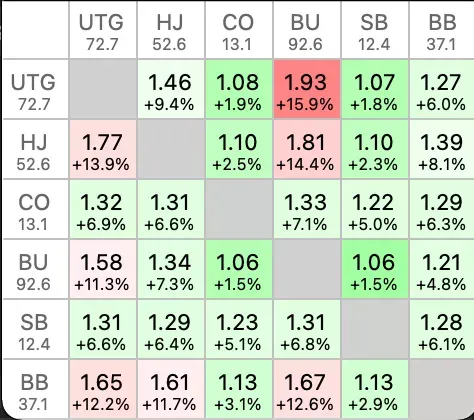
@jlaux7
It's a shame that this is the hand that she will be remembered for in the 2024 ME, and not the hand where she lost the absolute minimum with KK vs AA, or turning her KK into a bluff on an A-high board 3-handed.
Kami Chisholm
The KK bluff was next level. But yes, I think she probably will be remembered for this for a very long time, though she's hardly the first person to punt a main FT bubble.
It's a very tough spot.



